Tashi Delekt...
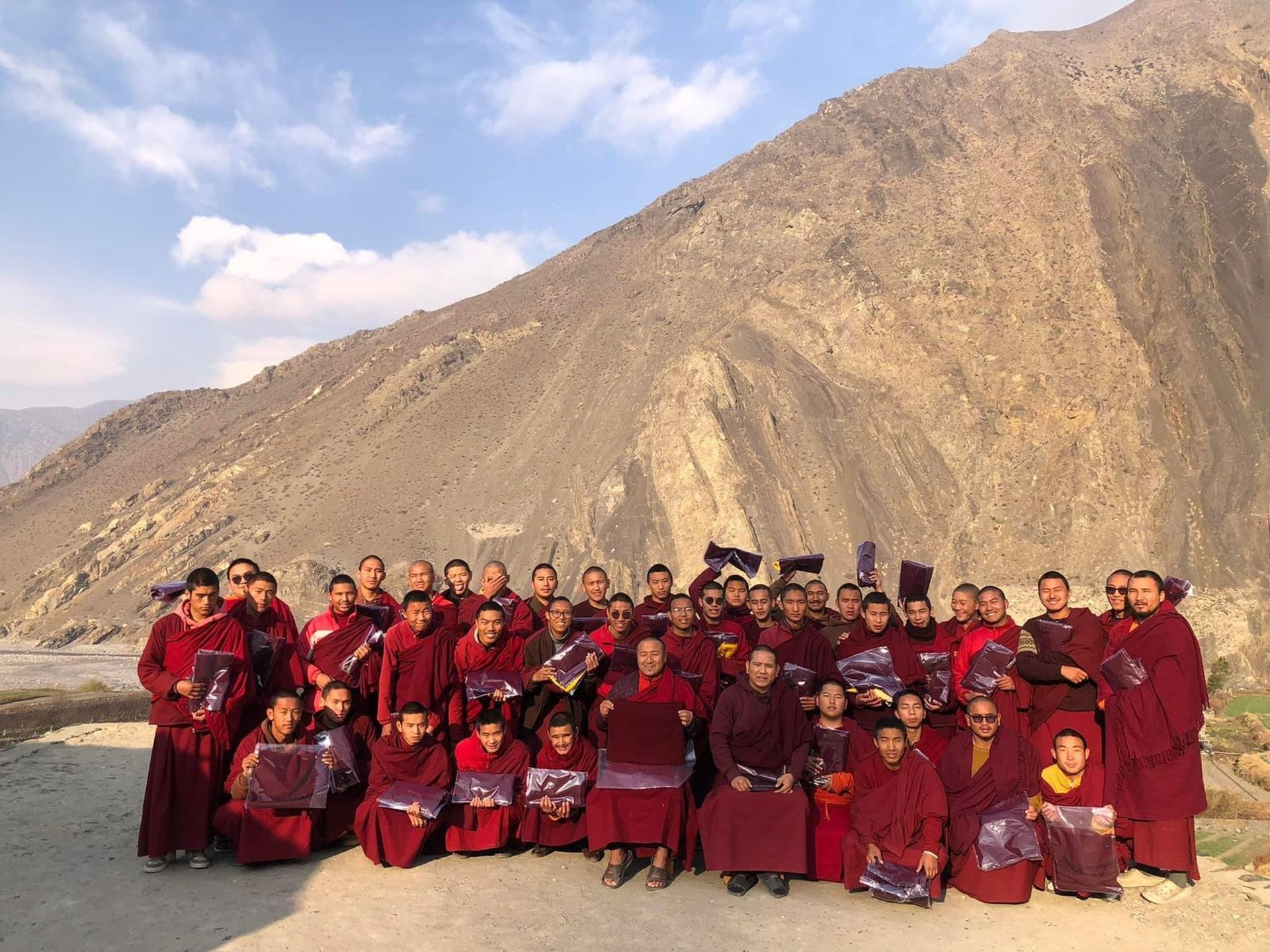
Support Mustang Buddhist College
Join us in supporting Mustang Buddhist College through vital funding initiatives.
Your support makes a difference.
★★★★★
Support Mustang
Buddhist
College
Empowering Buddhist traditions through education and community support for the Mustang Buddhist College
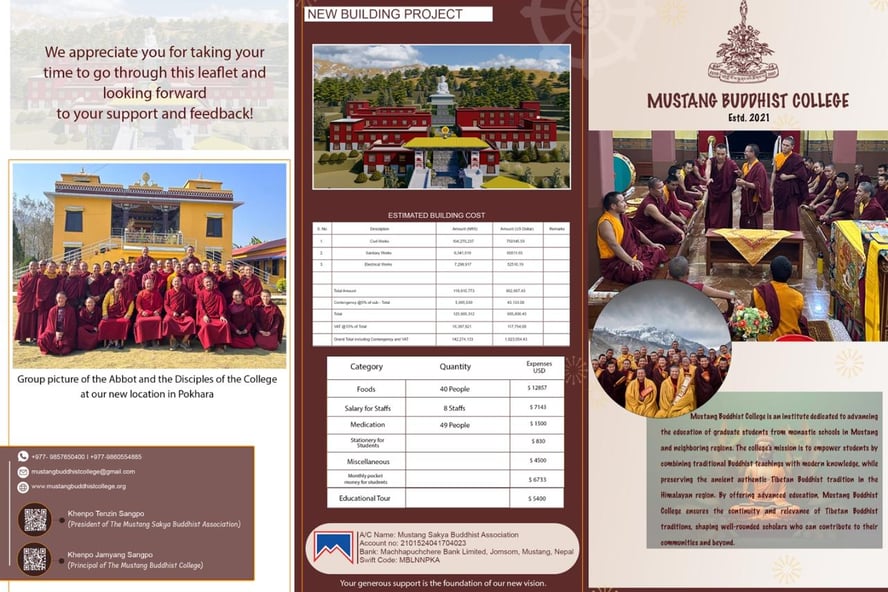

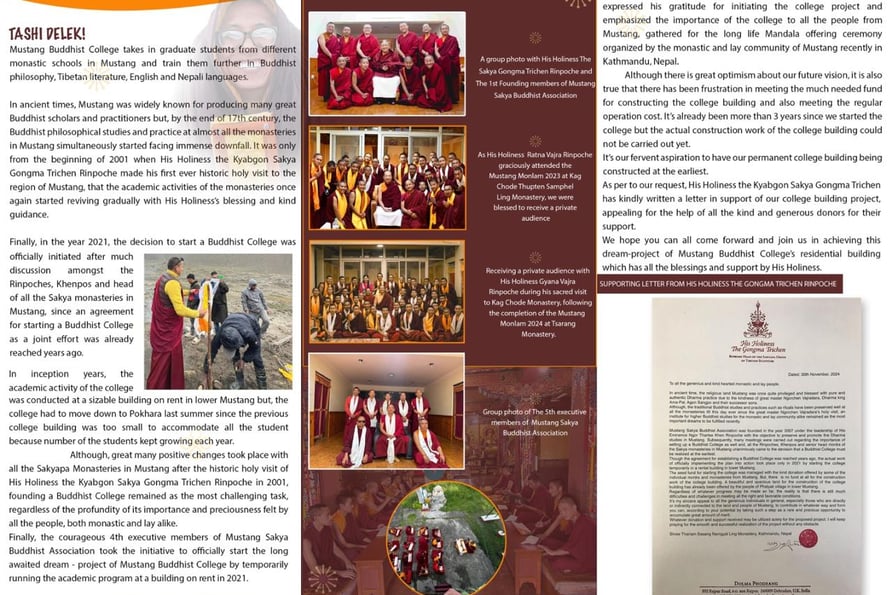


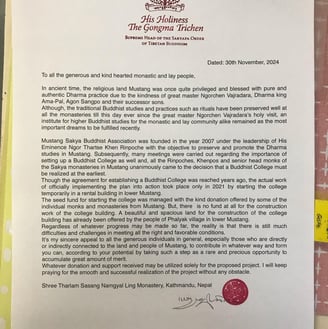
Buddhist Education Initiatives
With due respect and sincerity, I would like to bring to your kind attention for funding an important project envisioned by Mustang Sakya Buddhist Association in Mustang.
Although, Mustang once remained as part of Ngari Tibet, it became an independent kingdom in 1380 when A-Ma-Pal, a warrior and devout Buddhist built a palace called (Kha Choe Dzong) near Lo- Manthang. He gradually defeated the local warlords and constructed a walled capital Lo- Manthang. The late king Jigme Dorje Palbar Bista was the unofficial king of Mustang between 1964 and 2008, until monarchy, semi monarchy, vassals and titular kingships were abolished in Nepal.
He was descendant in 25th generation of king A-Ma-Pal who was the founder of the (Lo) dynasty. Mustang is bordered by Tibetan Autonomous region, in the south and Nepal in north-west. Mustang functioned as an independent kingdom ruled by the continuous successors of the founder king, A-Ma-Pal until late 17th century when the Nepali Gorkha king aggressively integrated all the smaller kingdoms into greater Nepal.
Mustang once was a prosperous kingdom due to its important geographical location for salt trade route between the neighboring countries. It also used to be a popular destination for Buddhist studies, art and traditional medicine practice.
Great many master such as Lowo Khenchen Sonam Lhundup, Jetsun Kunga Dolchog and Ngari Panchen Pema Wangdak were some of the popular figures, who were not only native and well known in Mustang, but also throughout the Himalyan region including Tibet.
There are many sacred places related to the life of great Indian master Guru Padma Sambhava who visited Mustang in order to subdue a female spirit, which was causing the obstacle for the construction work of Samye monastery in Tibet.
Lo- Gekar Monastery, the first and foremost monastery of its kind, in the Himalayan region founded by Guru Padma Sambhava is in Mustang.
Mustang is popularly known to be a place where an authentic Buddhist cultural and religious heritage are still well preserved over all those past centuries. The reason why the cultural and religious heritage in Mustang are so unique and authentic is mainly due to its long isolation from the rest of the world. Mustang remain strictly restricted for outsider or foreign visitors for a long time. Especially, upper part of Mustang was officially opened for tourist only in 1992.
Today, Mustang is the most favorite destinations for foreigners who wishes to observe and explore the authentic Himalayan Buddhist culture and religious practice. Despite the high permit fee for visiting Mustang, foreigner take it as their dream come true to be able to visit Mustang.
Mustang today is also very popular destination for Indians as well because of two sacred pilgrimage site; Muktinath Temple and Damodar Kunda.
Thousand of Indian are to be seen everyday visiting Muktinath temple today.
Mustang Sakya Buddhist Association was founded in 2007 with the main objective to preserve and promote the ancient Buddhist studies, traditional art and skill of the region. This association acts an umbrella to bring all the monasteries, local community and Sanga members of the monastery together. There are more than 100 historical monasteries, meditation cave and stupas which all dates back to 500 to 1200 years old. The monks from Mustang used to go to the monastic institute in India and Kathmandu founded by Tibetan Lama due to the lack of a proper educational center in Mustang itself.
Therefore, Mustang Sakya Buddhist Association has just started an institute in 2021 for further Buddhist studies for the young graduating monks from different monastic school in Mustang.
The institute was operated in a building on rent for the last three years in Kagbeni, Mustang.
The present main objective of Mustang Sakya Buddhist Association is to construct a permanent residential building for Mustang Buddhist College where higher Buddhist studies, art and traditional medicine, astrology and other traditional skill would be provided for both the monk and lay community of Mustang.
We have already confirmed the location for construction of our future Mustang Buddhist College which is about 20 minutes drive away from the district headquarter Jomsom, Mustang.
Such an institute would not only be the first one in Mustang, but in the whole Himalayan region and Nepal. This institute would also help providing teaching to foreign students who wish to pursue studies on the ancient Buddhist wisdom and art of Himalaya.
I strongly appeal all the well-wishers, Dharma friends and all who follows the precious teaching of Buddha to kindly assist us in realizing this precious project as soon as possible.
Thanking you very much!
Khenpo Tenzin Sangpo
President
The 5th Executive Members of
Mustang Sakya Buddhist Association.
Gallery
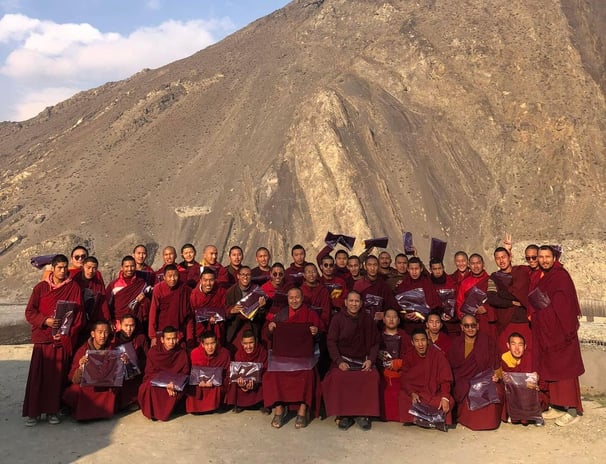

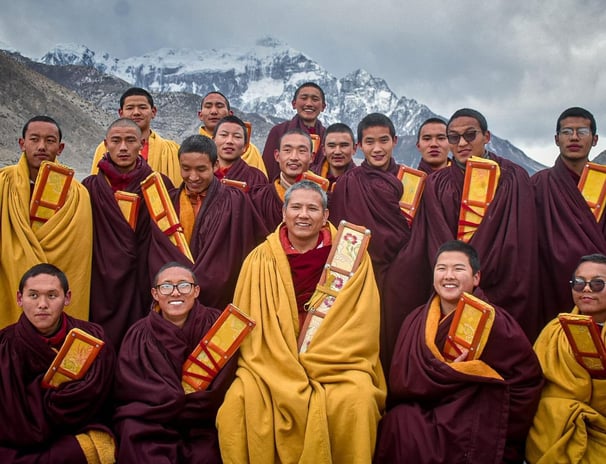

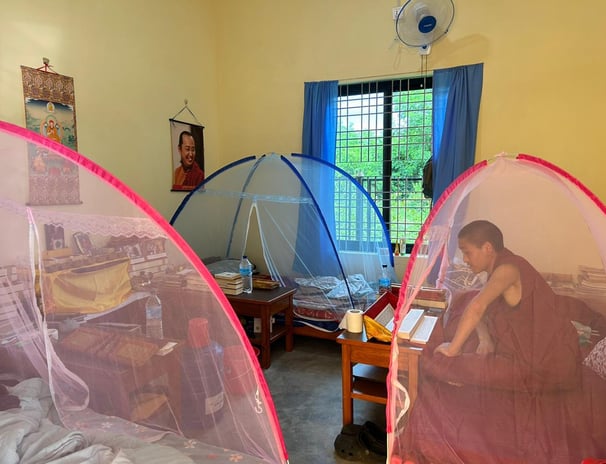

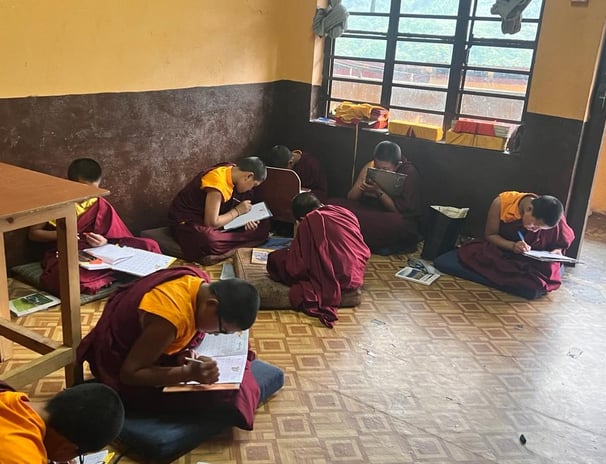

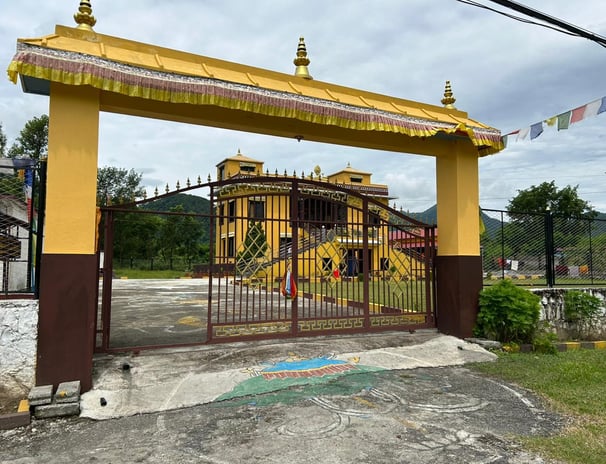

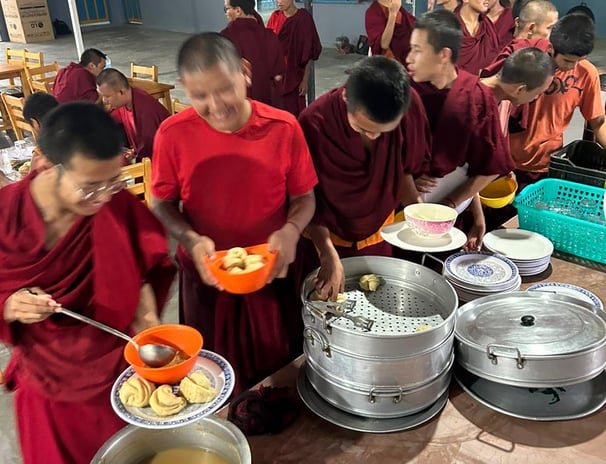

Mustang Buddhist College
Contact us
Khenpo Tenzin Sangpo
President of Mustang Sakya Buddhist Association
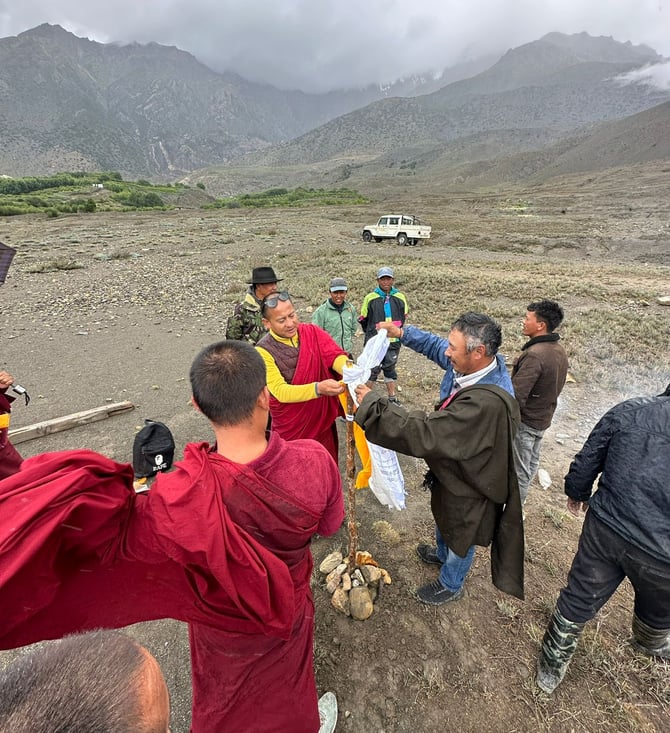



Khenpo Jamyang Sangpo
Principal of The Mustang Buddhist College
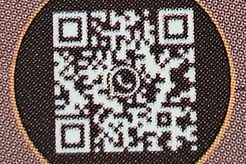

email:
mustangbuddhistcollege@gmail.com
Continuing the Dharma Wheel
Educating the next generations of Buddhist Scholars
CONTACT
email:
mustangbuddhistcollege@gmail.com
+977-98576 50400
+977-98605 54885
© 2025. All rights reserved.